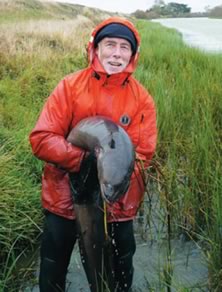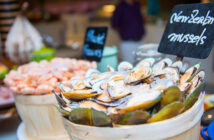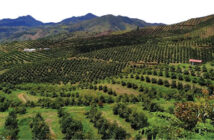
Two mothers had offspring within minutes of each other for the first and only time in their lives. One was 15 years old and the other was nearly 100.
That age gap was not the only remarkable feature of this double event. Neither mother, nor any of the others around them, produced just twins or triplets – not even dozens or scores of little ones. Each had at least two million and possibly as many as five million.
Those astronomic figures confirm that, thanks to Kiwi ingenuity, our exports could have a multi-million-dollar annual boost. But one of the country’s most renowned experts warns that lack of financial support from the Government could result in the benefits going instead to China.
The mothers are New Zealand longfin eels which can grow to 1.6 metres and weigh up to 40kg. The babies, known as glass eels, are worth a fortune on the international market, particularly in Japan where, after being farmed and grown for six months, they are considered a great delicacy.
Top eel authority Dr Paul Decker, director of a specialist research unit at Warkworth’s Mahurangi Technical Institute, says that eels worth $3 billion are eaten worldwide each year and that NZ’s export figure is about $8 million.
That export income could eventually soar to billions, he says, if funding were available for his team to expand its successful research – with NZ then being able to sell vast quantities of glass eels to ready worldwide markets.
“But it is now starting to seem that this benefit will be lost to New Zealand – going instead to China,” he says.
Achievements at Warkworth, which have brought would-be investors from China, include the ability to fertilise and hatch virtually all the two million or so eggs produced by a female and keep the babies alive for up to 12 days. That is the age at which they develop a mouth.
“Eels are born without mouths or eyes, and initially they feed off their yolk sacs,” says Dr Decker. “Our next task is getting them to feed.”
Another aspect of the problem is explained by NIWA principal scientist Dr Don Jellyman, another world-acclaimed authority, who has studied eels for 40 years.
“The food that then is given to them is the powdered egg case of a shark and long term that is not a sustainable source of nourishment,” he says. “We have to find something more readily available to wean them on to a different diet.”
“Getting nearly all the babies to this 12-day stage – after managing to hatch them at any time rather than being restricted to the limited natural season – is something no-one else has managed,” says Dr Decker.
“But, the additional research needed to get to the next stage, growing them until they’re big enough to be sold for farming, is extremely expensive and our project at Warkworth is entirely privately funded.
“Government research agencies describe the project as ‘worthy of funding’ but say that they do not have any budget for such funding.
“A Chinese delegation has now asked if we will let them fund the project through to completion. The fish-hook is that they want us to move the work to mainland China.
“That would be bad because, with the world’s eel population seriously declining, growing glass eels to the stage where they could be exported for farming overseas would have enormous export potential for New Zealand.”
At present eel meat is being exported from NZ at about $12 a kilo. But the price for a kilo of glass eels hatched in captivity – with about 5000 in a kilo – would be about $2,000.
“And the international market is going to get better and better for sellers,” says Dr Decker. “The number of wild eels is tumbling globally because of factors such as pollution and sprays, as well as dams and other obstacles which make it difficult for them to travel to their spawning areas.
“We’ve ripped out their habitat something fierce. We allow dairy cows to graze on river banks and councils spray the willows around those banks – destroying the root systems where the eels live –and what do we replace them with? Nothing! That’s what. So there’s a bleak future for wild eels.
“In Europe they’ve lost 95 per cent of the eel population in the past 20 years and I foresee the time when none will come from there.
“Many countries which have been exploited are cracking down because of this problem and so, because of our work at Warkworth, New Zealand could be a big player worldwide in the provision of captive-bred eels for overseas farmers.
“It would be rather like a global chicken market – with us exporting the young for others to farm and develop. And that would be very lucrative indeed. So we’re desperately hoping that we can keep this as a business for New Zealand.”
Longfin eels take about five months to swim the 5000km from NZ to their spawning grounds around the Pacific Islands.
Females mostly live twice as long as males and make this journey at almost any stage between the ages of 15 and their maximum of about 100 years. After laying one mammoth batch they die.
Small longfins feed on worms, water snails and insect larvae. They later feed on fish, fresh water crayfish and small birds such as ducklings.




























































































